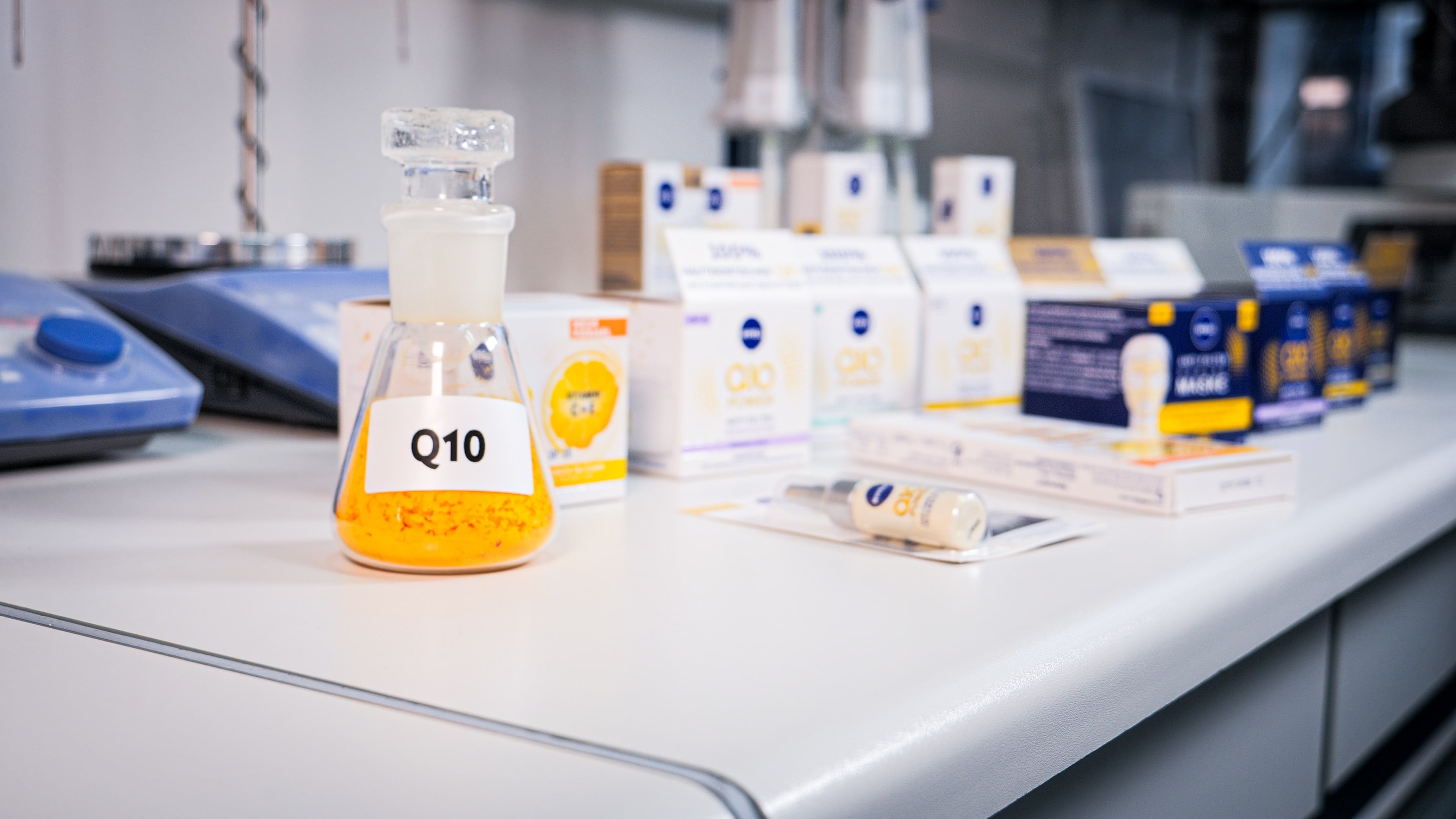According to NIVEA’s parent company Beiersdorf, one NIVEA Q10 product is sold every two seconds, making it the brand’s top-selling face care range.
Despite being first introduced to the skincare market in 1998, Q10 is still a key anti-aging ingredient for the brand, for which it continually invests in research and improvement.
Its latest launch is NIVEA Q10 Targeted Wrinkle Filler, a serum that combines pure Q10 with Bioxifill® peptides, which it claims can improve the look of the most stubborn wrinkles.
Tested on over 60,000 participants
Coenzyme Q10 was first discovered by the American scientist Frederick L. Crane in 1957. British scientist Peter Mitchell conducted further research into it and was awarded the Nobel Prize in Chemistry for his achievements in 1978. Beiersdorf researchers took on the work with a focus on human skin in the early 1990s and in 1998, Beiersdorf first made Q10 available in anti-aging skin care products.
To date, over 50 scientists have been involved in researching Q10, metabolic processes, and formula technologies with Q10. This has generated around 40 scientific contributions, more than ten of which were in publications reviewed by external experts. The efficacy of Q10 products has been tested on over 60,000 study participants.
The body naturally produces coenzyme Q10 – it’s vital to life and can be found in every cell. It’s a natural antioxidant that combats free radicals, which cause premature ageing, but levels of Q10 diminish with age, stress and UV rays.
Skin cells can be biologically rejuvenated
“While we have been able to demonstrate its efficacy in studies again and again, our research continues to bring new and decisive details to light regarding the precise cellular regulation of Q10’s effect,” explains Dr. Julia Weise, laboratory manager in the Biological Testing department at Beiersdorf.
Weise and a team have recently demonstrated that a Q10 deficit can be replenished and skin cells can be biologically rejuvenated as a result.
Beiersdorf’s R&D department also collaborates with Q10 scientists at other research institutes. It has recently cooperated with the research center DESY (Deutsches Elektronen-Synchrotron), the University of Hamburg, and the Fraunhofer Institute for Applied Polymer Research (IAP) to use an imaging technique to make Q10 introduced into skin cells visible for the first time and was able to track its cellular uptake and the path taken by the coenzyme. The method based on the principle of X-ray fluorescence analysis and the evidence this delivered of the Q10 active ingredient making its way to where it is intended to go have caught the attention of scientists in other disciplines, for example in cancer therapy and in global Q10 research in areas other than the skin.
In the future, a key focus will be on decoding the body’s metabolic processes and using the findings to learn more about the skin’s ageing process.
Future research priorities
We spoke to Dr Julia Weise to find out more about future research priorities for the Q10 range and the wider Nivea brand:
"In cooperation with our academic partners and expert network, we will put further emphasis on deciphering additional scientific details on Q10’s role in the aging process with a focus on the skin. Our priority will be to gain an even better understanding of how skin cells age, which specific molecular mechanisms are involved and how and why skin cells benefit from Q10," she said.
While stressing she couldn't go into too much detail yet, she added they would be looking at "the role of Q10 in the energetic signalling within skin cells, especially in the mitochondrial respiratory chain and also beyond. This is certainly something that will be looked at further."
In terms of the future research priorities for the wider NIVEA brand she added that sustainability is a key priority for Beiersdorf and this is very much reflected in its R&D work. From raw material origin to formulas and packaging – all aspects of the products are scrutinized.
"Furthermore, the aging of the skin and all underlying biochemical processes are still not completely deciphered and its detailed understanding revealing cosmetic intervention points is one research focus at Beiersdorf.
"Another priority is to enlarge the scientific knowledge of skin of colour and the specific needs different skin types have. Additionally, skin tone management and skin moisturization are more aspects that our researchers are exploring in more depth and contributing to the advancement of the technology for the benefit of the consumer.
"Moreover, our R&D is committed to constantly expanding the knowledge base on oily and blemished-prone, dry, and atopic skin. We are convinced that understanding the underlying mechanism is the key to ideally supporting the skin in balancing these issues. In addition, sun protection is a core expertise of Beiersdorf and we conduct intensive research to preserve the health of consumers."

